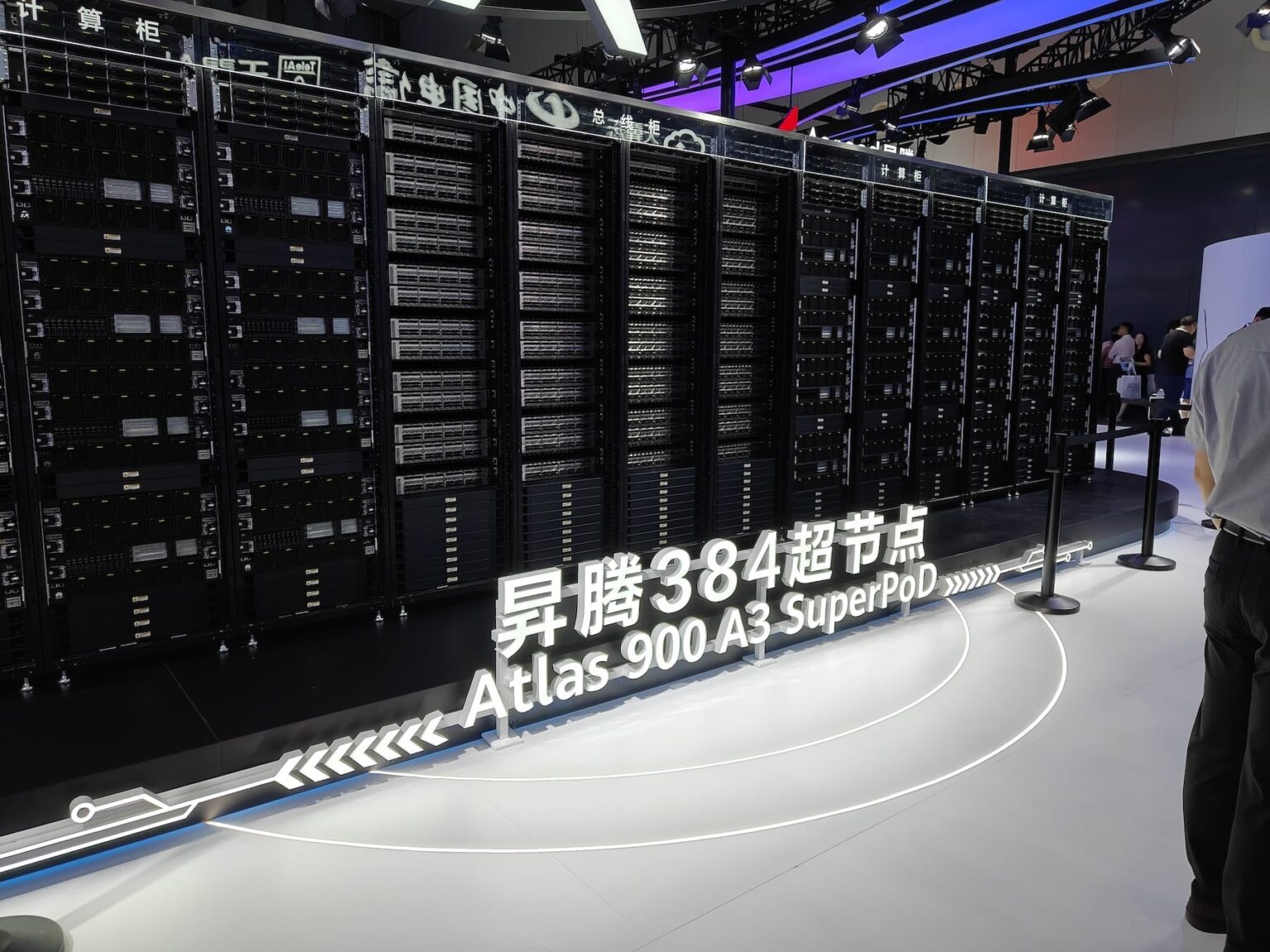During the World Artificial Intelligence Conference (WAIC) held in Shanghai, Huawei publicly introduced its new AI cluster, CloudMatrix 384, also known as Atlas 900 A3 Superpod. This supermachine is designed to compete directly with some of the most advanced solutions on the market, such as NVIDIA’s GB200 NVL72 system, which it surpasses in performance for BF16 precision tasks, according to the company.
Huawei’s new cluster integrates 384 Ascend 910C chips connected via an all-to-all topology interconnection architecture, enabling intensive cooperation and low latency between processors. While each individual Ascend chip’s performance is lower than NVIDIA’s Blackwell GPUs, Huawei has offset this gap through massive scale—achieving a total computational capacity of 300 petaFLOPS in BF16.
Huawei competes at the top… with high costs and power consumption
The CloudMatrix 384 not only doubles FP16 performance compared to NVIDIA’s system but also boasts 3.6 times more memory capacity and 2.1 times greater bandwidth than its U.S. rival. However, it consumes nearly four times the energy of the GB200 NVL72, raising questions about its energy efficiency. Additionally, each unit costs around $8 million, compared to nearly $3 million for NVIDIA’s system.
Nonetheless, Huawei’s aim isn’t solely to offer a cost-effective alternative. The company seeks to demonstrate it can internally produce cutting-edge solutions without relying on Western components. This move is particularly significant amid export restrictions on advanced technologies to China.
A strategic leap in China’s AI infrastructure
Huawei emphasizes that this system was developed entirely with its own resources, aiming to solidify its role as a leader in China’s AI infrastructure. First unveiled internally in May during their developer conference, the system is now being presented publicly for the first time internationally.
The supernode architecture allows the cluster to operate as a single logical machine, optimizing communication between compute, storage, and networking. This makes it an ideal platform for large-scale model training, generative AI, and real-time applications like predictive analysis and advanced robotics.
Beyond chips: a geopolitical battle
International analysts see the CloudMatrix 384 as a crucial element in China’s strategy to reduce dependence on foreign technology. Some investment banks suggest Huawei’s system offers a “one-generation advantage” over current NVIDIA and AMD products and could shift the balance of power in the global AI market.
Meanwhile, Huawei continues to strengthen its Ascend ecosystem through development tools, optimized frameworks, and strategic alliances. The effort to compete atop the AI hardware summit is not just technical but also symbolic: Huawei aims to prove that China can compete equally in the race for technological supremacy in AI.
The unveiling of CloudMatrix 384 not only boosts Huawei’s standing against NVIDIA but also marks a new phase in the evolution of high-performance computing tailored for AI, with impacts that could be felt across data centers worldwide in the coming years.
Photos and source: MyDrivers

